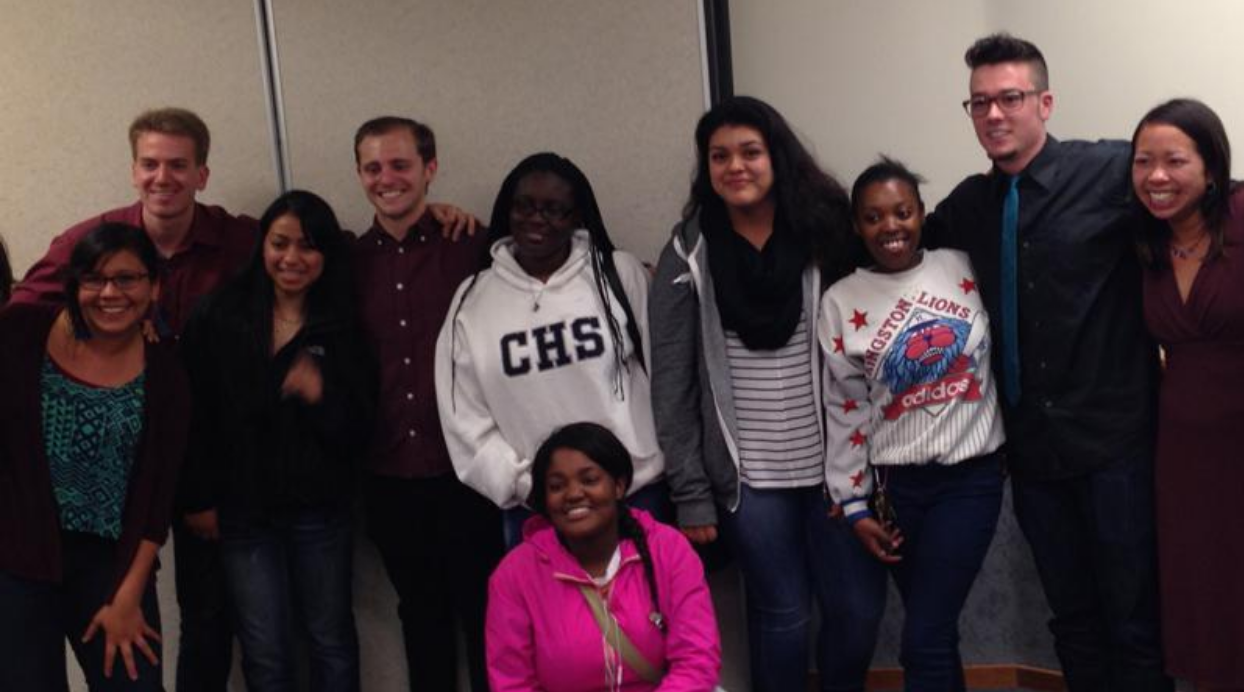The Voices of HOPE SF Youth

by Ellie Rossiter:
Last month, I joined with our HOPE SF cohort to hear the results of our latest assessment, focusing on the experience of youth living in HOPE SF sites.
Working with San Francisco State’s Health Equity Institute’s public health graduate students, and with the Youth Leadership Institute (YLI) for seven months, ten young people who live in four separate HOPE SF sites lead this report-back, pulling together testimonials, insights, and key recommendations that will help to inform and define our work as we move forward working together with community leaders who are making change happen.
HOPE SF young people deal with all of the regular teenage challenges, like school, family, community, peer pressure, and culture, but at recent event, there were quotes on all the chairs sharing key perspectives, and performances by youth, like Maxine, who read her poem, “Yet, We Live Here.” Maxine lives in Sunnydale, one of the four HOPE SF housing developments. Her poem captured the conditions of public housing — dilapidated walls and floors, inadequate sewage set up and treatment, pests and vermin, unsafe transit, gun violence — but it also captured the sense of community and the value of home.
The message the youth gave loud and clear is that quality youth services are badly needed. Recommendations from the assessment centered on more programs and safe places that empower youth, including engaging young people as mentors and volunteers, community safety ambassadors, and employing them as change agents in their own communities.
Parents, community and city leaders packed the room to hear the presentation that focused on the well-being of the HOPE SF young people, living in the midst of the city’s massive community revitalization effort.
The findings are robust. Here are a few examples:
- The regular violence occurring in the community causes post-traumatic stress disorder. Coping through substance abuse is rampant as a result. “We are numb to the violence,” they reported. Relationships between young people and police are strained; transportation is unsafe.
- Young people need better education, job training, and help getting jobs, but the amount of stress caused by trauma is a barrier to being successful in school and in jobs.
- The neighborhood is run down and cut off from the rest of the city. Young people have limited access to healthy food and places to be physically active.
What’s next? “We want to find ways to plug them in immediately,” said Tomiquia Moss, the City’s director of HOPE SF. We are going to:
- Continue to work with youth leaders as advisors on the HOPE SF redevelopment effort.
- Support youth-led community building projects through the city’s youth-to-youth grantmaking program.
- Deliver on their recommendations for youth engagement programs, including the beautification work projects and safety strategies.
The voices and leadership of youth are critical in this work, and must be central to the conversation. Check out this short documentary, STEP UP STEP DOWN, which chronicles the lives of Mecka, Koreena and Anteris as three youth leaders living in public housing and are levers of change in their communities.

